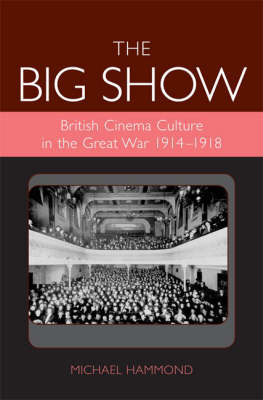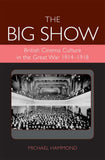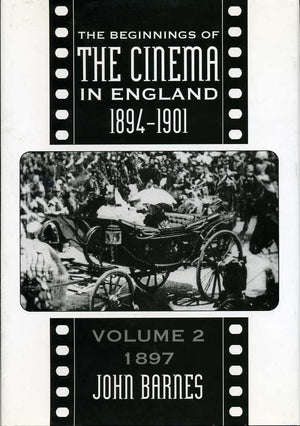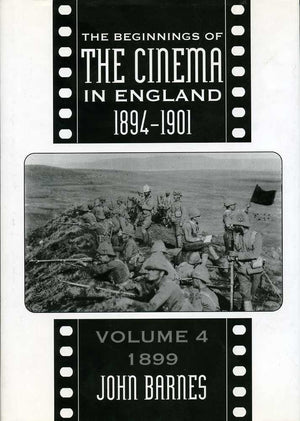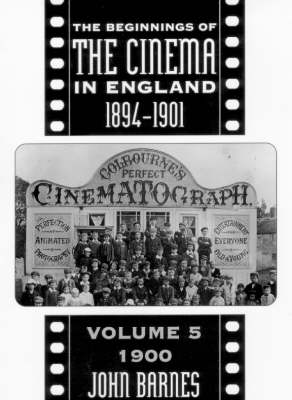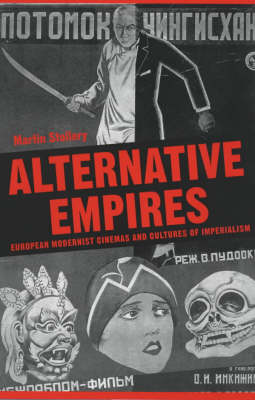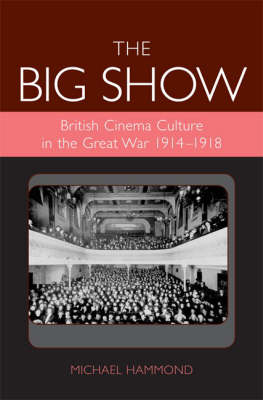University of Exeter Press
The Big Show
British Cinema Culture in the Great War (1914-1918)
Couldn't load pickup availability
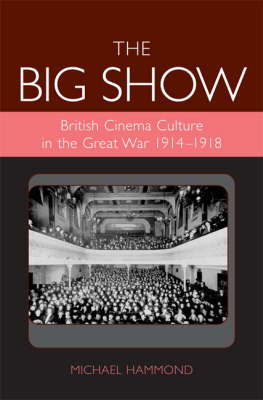
- 316 Pages
The Big Show looks at the role played by cinema in British cultural life during World War One.
In writing the definitive account of film exhibition and reception in Britain in the years 1914 to 1918, Michael Hammond shows how the British film industry and British audiences responded to the traumatic effects of the Great War.
The author contends that the War’s significant effect was to expedite the cultural acceptance of cinema into the fabric of British social life. As a result, by 1918, cinema had emerged as the predominant leisure form in British social life. Through a consideration of the films, the audience, the industry and the various regulating and censoring bodies, the book explores the impact of the war on the newly established cinema culture. It also studies the contribution of the new medium to the public’s perception of the war.
The Big Show looks at the role played by cinema in British cultural life during World War One. Hammond shows how the British film industry and British audiences responded to the traumatic effects of the War, and contends that the War’s significant effect was to expedite the cultural acceptance of cinema into the fabric of British social life.
‘…the diversity of materials focused in this book through the specifics of cinema exhibition in Southampton provides vivid access to the social, cultural and aesthetic currents that must cross in any historicized moment of viewing. It is therefore both essential reading for anyone concerned with pursuing the further development of cinema in Britain and a model for historical analysis.’ (Screen, 48.1. Spring 2007)
‘There are many reasons to call this book an exceptional endeavor. From the complex intertextual network Hammond draws, emerges a vivid panorama of British cinema culture in the war years. So far, no other study has shed such a bright light on the cinema culture from that era and film scholars as well as (media) historians will benefit from the fresh approach and vigorous insights of this book.’
‘The book is written clearly and with relatively little recourse to jargon, and hits two areas of growing interest in film history: reception studies and British silent film history.’ (Historical Journal of Film, Radio and Television, June 2007)
‘The book is written clearly and with relatively little recourse to jargon, and hits two areas of growing interest in film history: reception studies and British silent film history.’ (Early Popular Visual Culture, Vol. 6, No. 2, July 2008)
‘…Michael Hammond has written a wonderful book. The Big Show is carefully researched, well organized and both persuasively and imaginatively argued. It is an ambitious book and well worth the reading of anyone seeking to understand the way movies came to take pride of place among the leisure activities of Britons creating a ‘cinema culture’.’ (Nineteenth Century Theatre and Film, Volume 35, Number 1, Summer 2008)
List of Illustrations
Acknowledgements
Introduction
1. Local Tracks: Exhibition Culture in Southampton
2. The Crisis of Total War and New Audiences
3. Anonymity and Recognition: The Roll of Honour Films
4. Education or Entertainment? Public and Private Interpretations of Battle of the Somme
5. Artful and Instructive: Respectability and The Birth of a Nation
6. Civilization: A Super-film at the Palladium, 1917
7. Chaplin: A Transatlantic Vernacular
8. 1918: Anguished Voices and Comic Slackers
Conclusion
Notes
Bibliography
Filmography
Index







